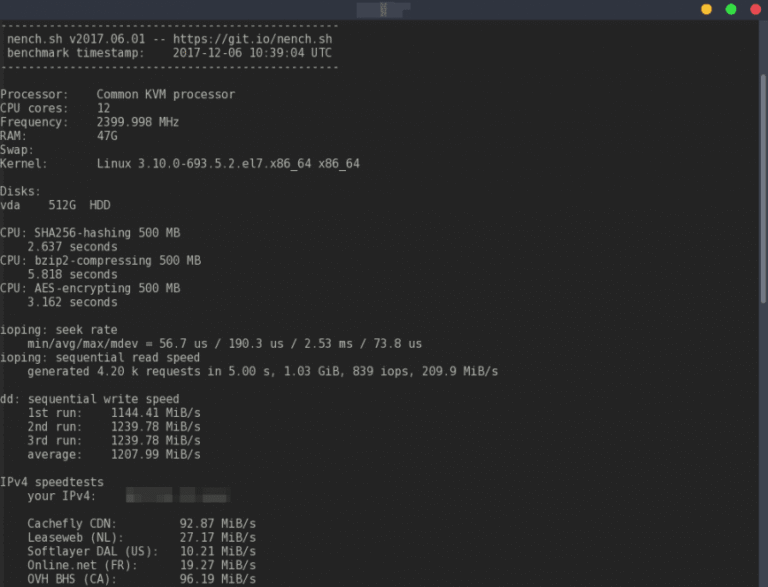
Migrating to the cloud can also support sustainability initiatives. Cloud providers often run their data centers more efficiently and use renewable energy sources, thereby reducing the carbon footprint associated with IT operations.
In today’s fast-paced digital world, cloud migration has become crucial for businesses seeking to stay competitive and agile. By moving to the cloud, companies can enjoy unparalleled scalability, enabling them to quickly adapt to changing demands without hefty investments in physical infrastructure. Cost efficiency is another significant benefit, as businesses only pay for the resources they use, reducing capital expenditures. Additionally, cloud platforms offer robust disaster recovery solutions, ensuring business continuity in the face of disruptions. With access to advanced technologies and enhanced collaboration tools, cloud migration empowers businesses to innovate, improve productivity, and accelerate their time to market, making it an essential strategy for digital transformation in the modern marketplace.
What Cloud Migration is And Why It is Essential for Businesses Today?
Security
Cloud Migration Defined
a. Data Protection:
Types of Cloud Migration
- Rehosting (“Lift and Shift”): Moving applications as they are from on-premises to the cloud with minimal changes.
- Replatforming (“Lift, Tinker, and Shift”): Making some optimizations to leverage cloud benefits while migrating.
- Repurchasing: Moving to a different product, often a SaaS platform, for better functionality and cost savings.
- Refactoring: Re-architecting applications to be more cloud-native to fully exploit cloud features.
- Retiring: Phasing out redundant or obsolete applications during the migration process.
- Retaining: Keeping some critical applications on-premises due to regulatory, security, or other concerns.
Why is Cloud Migration Essential for Businesses Today?
c. Establish a Timeline:
Conduct a thorough evaluation of your existing IT infrastructure to understand current resources and dependencies. Clearly define business objectives and perform a cost-benefit analysis to ensure alignment with long-term strategic goals.
c. Hybrid Cloud:
b. Minimize Downtime:
Environmental Sustainability
Cloud services usually include comprehensive disaster recovery and backup solutions. These ensure that data is protected and can be quickly restored in case of a failure, thus minimizing downtime and maintaining business continuity.
b. Compliance:
Follow the meticulously planned timeline and strategies to execute the migration, ensuring minimal disruption and downtime. Monitor the process closely, addressing any issues promptly to maintain operational continuity and efficiency.
a. Public Cloud:
Select a cloud model—public, private, hybrid, or multi-cloud—based on your specific needs for scalability, security, and regulatory compliance. Ensure the chosen model aligns with your business objectives and workload requirements.
Cloud environments enable faster deployment of applications and services. Businesses can rapidly develop, test, and launch new products or services, thereby accelerating time to market and quickly responding to market changes.
Cost Efficiency
In an era where digital transformation is a key driver of success, cloud migration has become a strategic imperative for businesses of all sizes. The benefits of moving to the cloud are manifold, encompassing cost savings, enhanced operational efficiency, improved collaboration, and access to advanced technologies. By adopting cloud migration, businesses can not only stay competitive but also innovate and grow in a dynamic market landscape.
While security is a common concern, leading cloud providers invest heavily in advanced security measures to protect data. They offer encryption, regular security updates, compliance with industry standards, and robust access controls to safeguard sensitive information.
c. Conduct a Cost-Benefit Analysis:
d. Multi-Cloud:
Enhanced Collaboration
Selecting the right cloud service provider is a strategic decision that requires careful consideration of your business requirements, provider capabilities, and future growth. By following a structured approach, you can identify a provider that aligns with your objectives and supports your cloud journey. ACL Digital stands out as an exemplary choice for cloud migration services, offering comprehensive expertise, robust security, cost efficiency, and unwavering support to ensure your migration is successful and sustainable.
Strategies for Choosing the Optimal Cloud Migration Approach
b. Private Cloud:
1. Assessment and Discovery
Cloud platforms facilitate effortless collaboration across geographically dispersed teams. Features like real-time data sharing, remote access, and collaborative tools enhance productivity and streamline workflows.
Cloud migration involves moving a company’s digital assets, such as data, applications, and IT resources, from on-premises infrastructure to a cloud environment. This transition can encompass public, private, or hybrid cloud models, each offering unique benefits. The essence of cloud migration lies in its ability to provide scalability, flexibility, and cost efficiency, allowing businesses to adapt quickly to market changes and operational demands. Furthermore, cloud migration enhances disaster recovery, business continuity, and collaboration, while providing access to advanced technologies. In today’s competitive and fast-paced digital landscape, cloud migration is essential for businesses to innovate, optimize their operations, and maintain a strategic edge.
- Conduct a thorough assessment of the existing IT infrastructure to understand what resources are currently in use.
- Identify applications, databases, and services that will be migrated.
- Assess the dependencies between different applications and services.
Implement robust security measures, including encryption and access controls, to protect your data throughout the migration process. Ensure compliance with industry regulations and standards to maintain data integrity and legal adherence.
- Clearly outline the business goals and objectives for the cloud migration.
- Determine how cloud migration aligns with the company’s long-term strategic goals.
- Establish key performance indicators (KPIs) to measure the success of the migration.
b. Selection of Migration Strategy:
- Analyze the cost implications of the migration, including potential savings and upfront costs.
- Consider both direct and indirect costs, such as training, potential downtime, and new tools.
2. Choosing the Right Cloud Model
Cloud platforms provide virtually unlimited resources that can be scaled up or down based on demand. This flexibility allows businesses to handle varying workloads efficiently without the need for significant upfront investments in physical infrastructure.
Migrating to the cloud enables businesses to significantly reduce capital expenditures associated with hardware and maintenance. Cloud providers typically offer a pay-as-you-go model, which allows companies to pay only for the resources they use, leading to significant cost savings.
- Ideal for businesses that require scalable resources and want to reduce capital expenditures.
- Suitable for hosting websites, email services, and development and testing environments.
Prioritize applications based on their complexity and criticality, and select an appropriate migration strategy such as rehosting, replatforming, or refactoring. Develop a detailed timeline to guide the migration process and ensure minimal disruption.
- Best for organizations needing enhanced security and control over their data.
- Commonly used by industries with strict compliance and regulatory requirements, such as finance and healthcare.
Conduct comprehensive pre-migration testing to identify and resolve potential issues in a controlled environment. Validate the functionality and performance of migrated applications to ensure they meet operational expectations post-migration.
- Combines public and private clouds, offering flexibility and the ability to balance workloads.
- Enables businesses to keep sensitive data on-premises while leveraging the scalability of the public cloud.
In this blog, we will delve into the best practices for cloud migration, offering insights and strategies to help organizations navigate this complex process with confidence and precision. Here are the key steps to achieving a smooth and successful cloud migration, empowering businesses to harness the full potential of cloud technology.
- Utilizes multiple cloud services from different providers to avoid vendor lock-in and optimize performance.
- Enhances resilience and disaster recovery capabilities.
3. Designing the Migration Plan
Disaster Recovery and Business Continuity
Scalability and Flexibility
- Categorize applications based on their complexity, criticality, and dependencies.
- Prioritize applications for migration, starting with less critical ones to mitigate risk.
Choosing the right cloud service provider (CSP) is a critical decision that can significantly impact the success of your cloud migration and overall IT strategy. Here is a strategic approach to help you make an informed choice, along with why ACL Digital is an exemplary cloud migration service provider.
- Rehosting (Lift and Shift): Move applications with minimal changes.
- Replatforming: Make some optimizations without altering core architecture.
- Refactoring: Rearchitect applications to be cloud-native.
- Repurchasing: Move to a different product, often a SaaS platform.
- Retiring: Decommission obsolete applications.
- Retaining: Keep some applications on-premises if necessary.
Cloud migration refers to the process of moving digital assets—such as data, applications, and IT resources—from on-premises infrastructures to cloud environments. This transition can involve various models, including public clouds, private clouds, hybrid clouds, and multi-cloud setups. The goal of cloud migration is to leverage the advantages offered by cloud computing, including scalability, flexibility, cost-efficiency, and advanced technological capabilities.
- Develop a detailed timeline for each phase of the migration.
- Ensure there is flexibility to accommodate unexpected challenges.
4. Security and Compliance
Access to Advanced Technologies
Planning a cloud migration strategy is a complex but essential process for businesses aiming to leverage the benefits of cloud computing. By carefully assessing the current infrastructure, choosing the right cloud model, and meticulously designing and executing the migration plan, businesses can achieve a smooth transition. Ensuring robust security, compliance, and post-migration optimization further solidifies the migration’s success, enabling the business to fully exploit the advantages of the cloud.
- Implement encryption for data at rest and in transit.
- Ensure robust access controls and identity management.
a. Pre-Migration Testing:
- Verify that the chosen cloud provider complies with industry-specific regulations and standards.
- Regularly audit compliance post-migration to ensure ongoing adherence.
5. Testing and Validation
By Nilima Shah
a. Execute the Migration Plan:
- Conduct thorough testing in a staging environment to identify potential issues.
- Validate that applications work as expected in the cloud environment.
b. Pilot Migration:
- Start with a pilot migration for a small subset of applications.
- Use the pilot to refine the migration process and address any challenges.
6. Migration Execution
a. Prioritization of Applications:
Effective cloud migration requires meticulous planning to ensure a smooth transition with minimal disruptions. The process involves several key steps, each critical to the overall success of the migration. Below is a comprehensive guide to planning a robust cloud migration strategy.
- Follow the established timeline and migration strategy.
- Monitor the migration process closely to ensure it proceeds smoothly.
a. Evaluate Current Infrastructure:
- Use strategies such as phased migrations or hybrid environments to reduce downtime.
- Communicate with stakeholders about potential service interruptions.
Cloud providers offer access to cutting-edge technologies such as artificial intelligence, machine learning, big data analytics, and IoT. These technologies can drive innovation, improve decision-making, and provide a competitive edge.
Post-Migration Optimization
After the migration, continuously monitor the performance of your applications to ensure they are running optimally in the new cloud environment. Implement cost management practices to control expenses and avoid overspending. Gather user feedback and leverage performance data to make ongoing improvements. Provide training and support to your team to ensure they are proficient with the new system and can fully exploit its capabilities, ensuring long-term success and efficiency.
- Performance Monitoring
- Cost Management
- Continuous Improvement
- Training and Support
How to Choose the Right Cloud Service Provider?
Agility and Speed to Market
- Assess Business Requirements
- Evaluate Cloud Service Providers
- Consider Future Growth and Innovation
- Migration Support and Tools
b. Define Business Objectives:
In the quickly advancing digital landscape, enterprises are increasingly identifying the transformative power of the cloud. Cloud migration has become an essential strategy for driving innovation and staying competitive for most of the businesses. However, the transition to the cloud presents several challenges. From choosing the appropriate cloud model to guaranteeing data security and minimizing downtime, a meticulously planned migration strategy is essential for a seamless shift.




